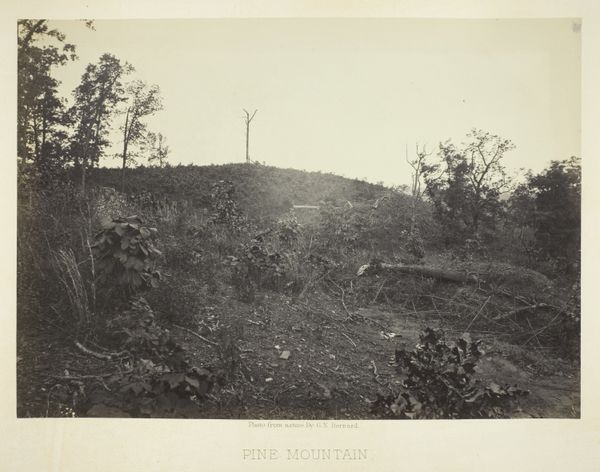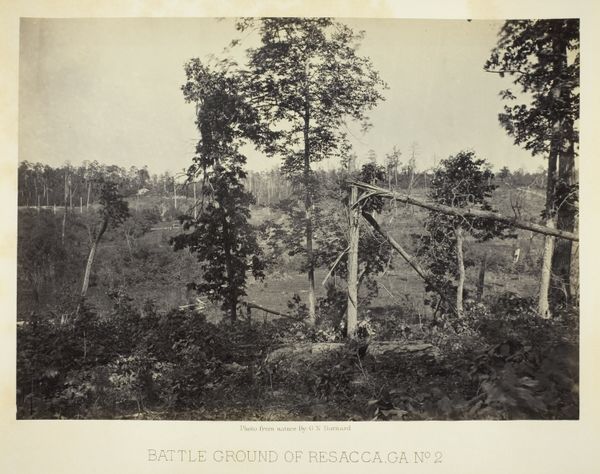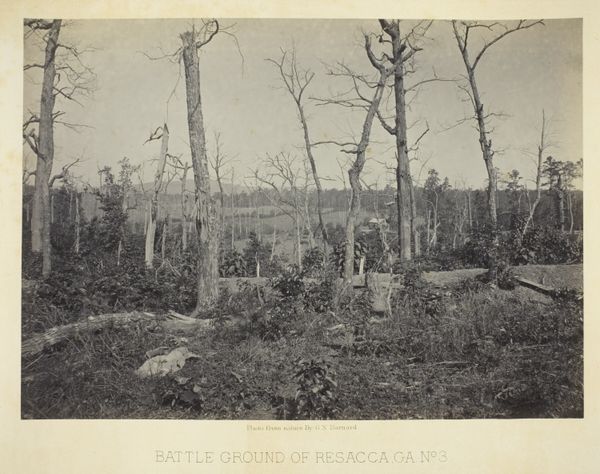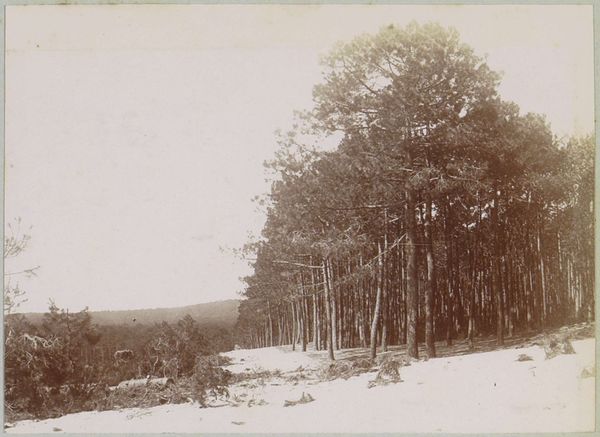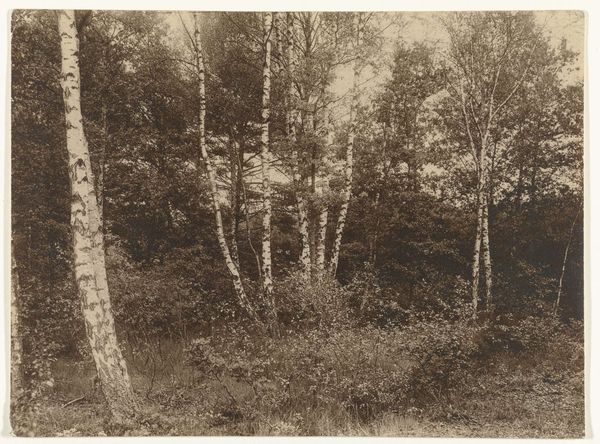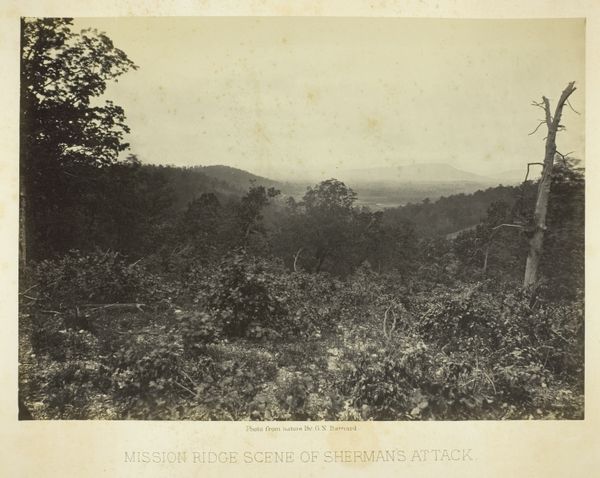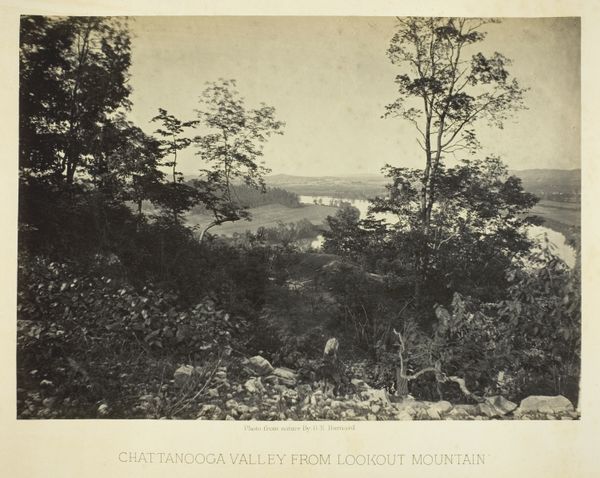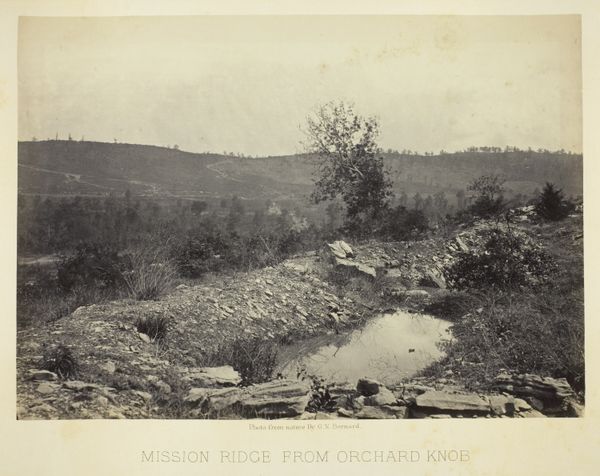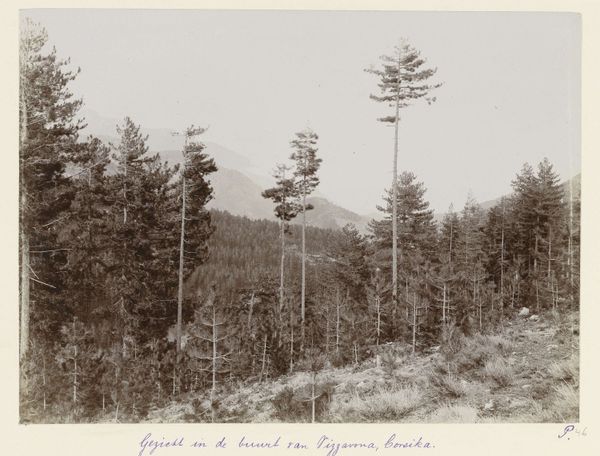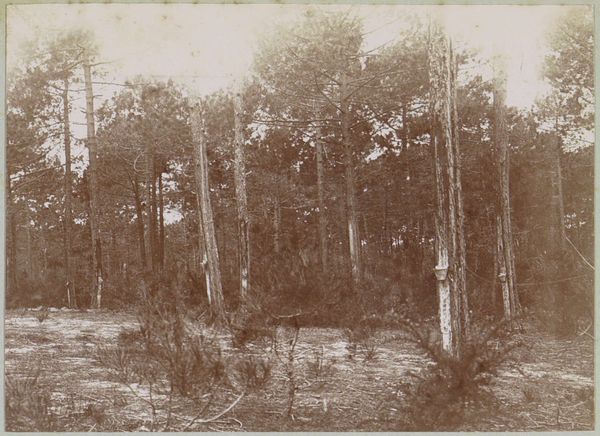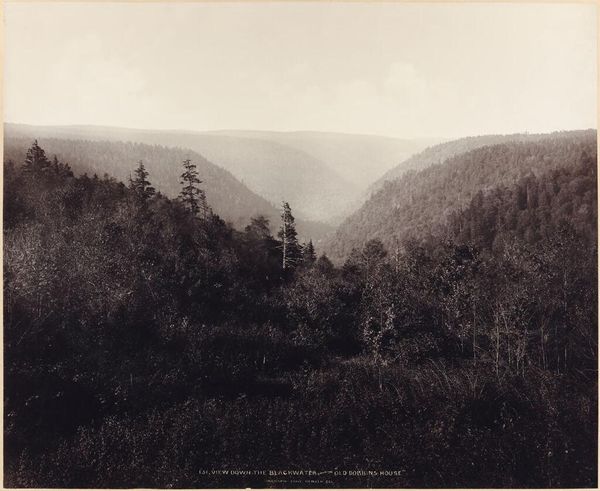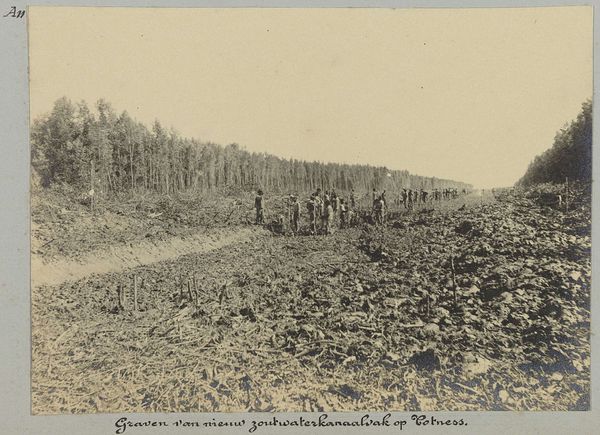
print, photography, gelatin-silver-print
#
aged paper
#
toned paper
# print
#
war
#
landscape
#
photography
#
gelatin-silver-print
#
men
#
united-states
Dimensions: 25.7 × 36 cm (image/paper); 41 × 51 cm (album page)
Copyright: Public Domain
Editor: Here we have George N. Barnard's gelatin-silver print, "Battle Ground of Resacca, GA, No. 1," created in 1866. The bleak landscape really emphasizes the devastation, especially in the contrast between the rough ground and the bare trees. What can you tell me about how its materiality informs its meaning? Curator: Absolutely. Looking through a materialist lens, we should consider not only the scene depicted, but also the choices made in its production. Barnard chose photography, specifically the then-new gelatin-silver process. Why use a relatively "objective" medium like photography to document this scene instead of, say, painting? Editor: Maybe it was about immediacy, capturing the scene as quickly and accurately as possible for documentation purposes. Curator: Precisely. Photography here serves a function beyond aesthetics; it's about producing a record. And what about the availability and distribution of these prints? Who was meant to see these images, and what effect do you think that had? Editor: Well, these prints could be reproduced and disseminated widely. Perhaps they served to bring the reality of war—its cost—home to those far removed from the battlefields, prompting reflection on the industrialization and reach of conflict. It shows how materials can affect labor and accessibility in an era of violence. Curator: Exactly. By focusing on the materiality—the photographic process and its potential for mass production—we can uncover its societal influence, as well as question whose narrative is highlighted through the work. It's not just a landscape, but a calculated construction of memory and perception. Editor: I hadn't thought about it in terms of the choice of material reflecting that wider access to photographic material for reportage. Curator: A new and accessible format helps show us the scope of material devastation of war in a visceral and objective medium.
Comments
No comments
Be the first to comment and join the conversation on the ultimate creative platform.
